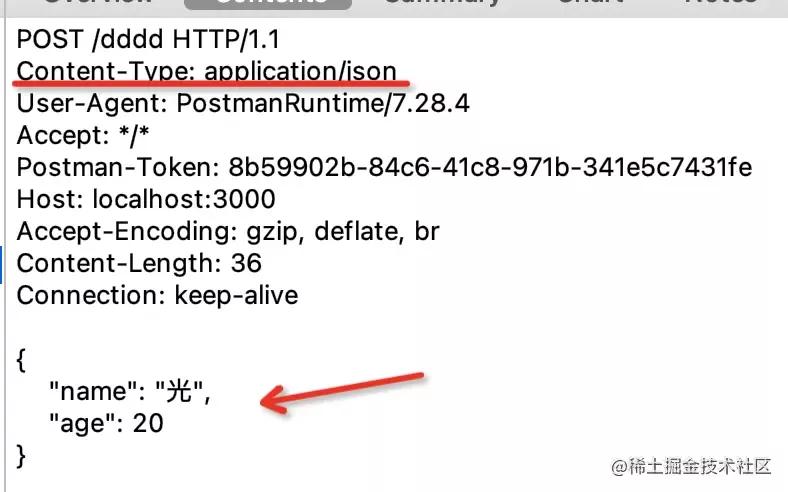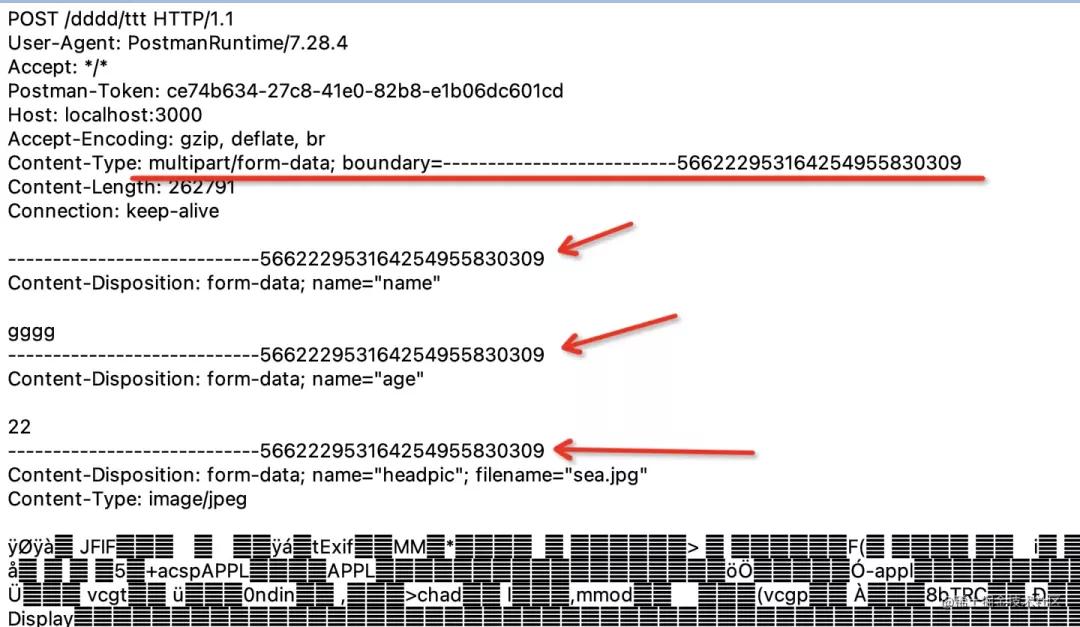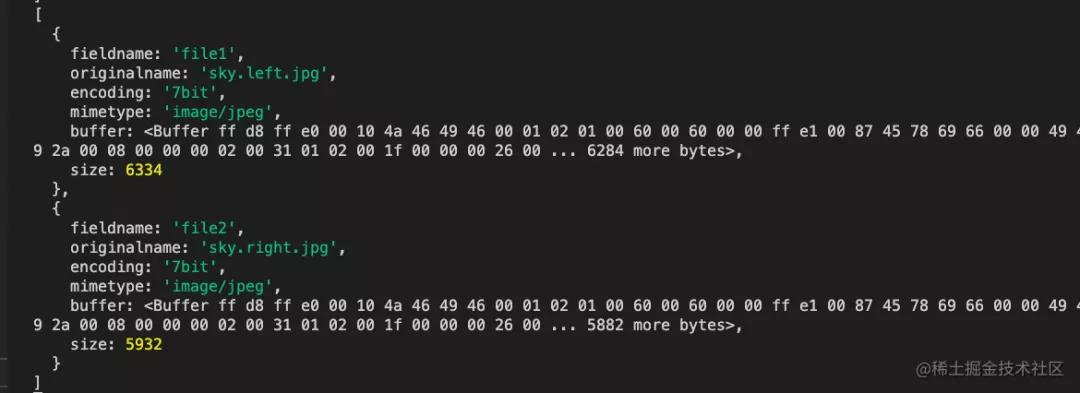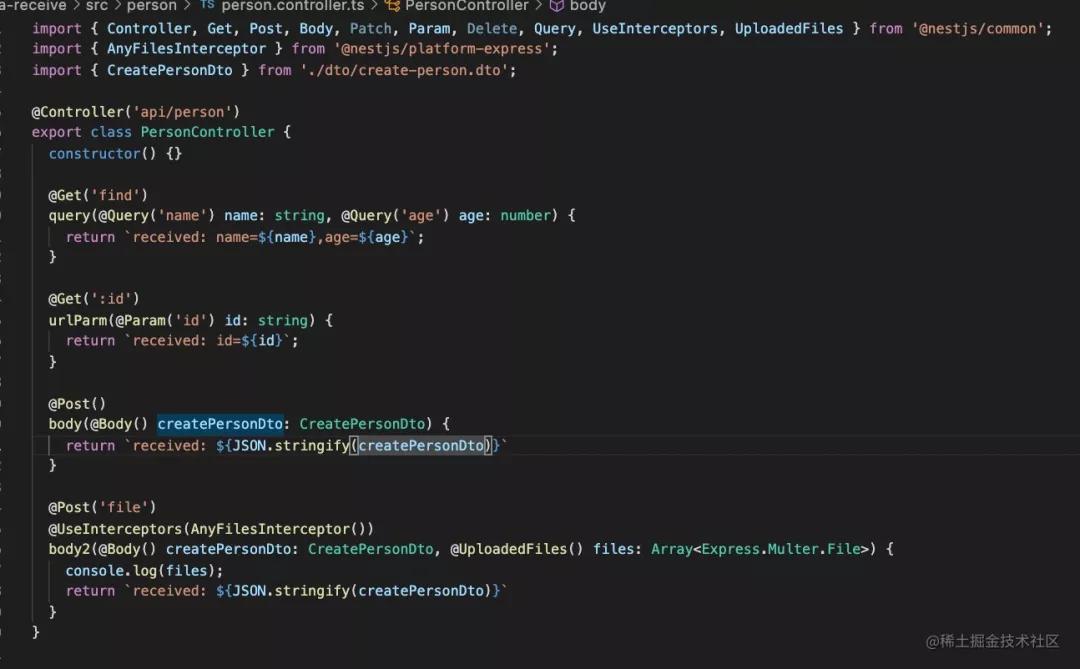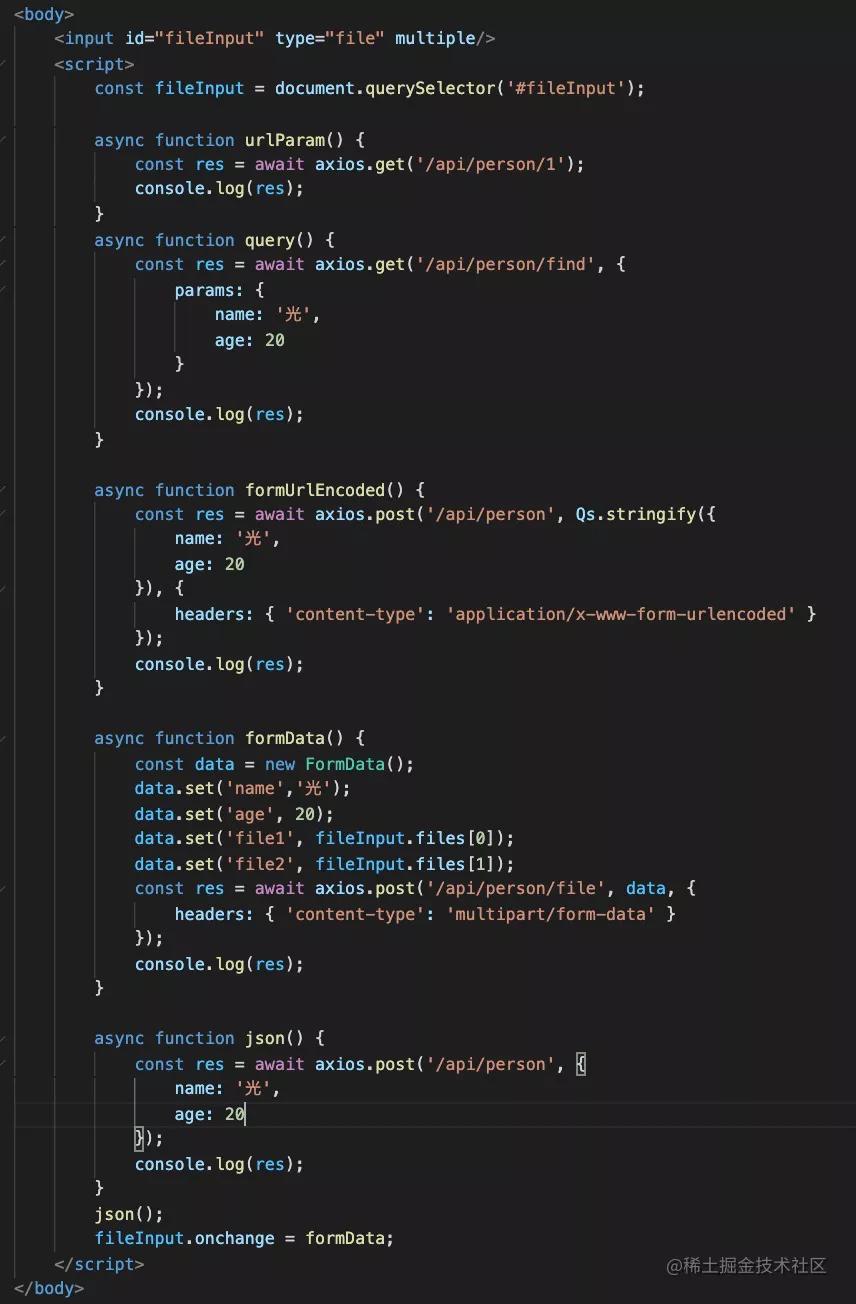上一篇文章我们总结了网页开发的 5 种 http/https 传输数据的方式:
- url param
- query
- form urlencoded
- form data
- json
这 5 种方式覆盖了开发中绝大多数场景,掌握好这些就能轻松应对各种 http/https 数据通信的需求。
如果你想成为一名全栈工程师,那么不能满足于会写这几种方式的前端代码,后端代码也得会写。
所以,这篇文章我们来实现下前后端代码,把整个链路打通,真正掌握它们。
前端使用 axios 发送请求,后端使用 Nest.js 作为服务端框架。
准备工作
首先我们要把 Nest.js 服务端跑起来,并且支持 api 接口、静态页面。
Nest.js 创建一个 crud 服务是非常快的,只需要这么几步:
- 安装 @nest/cli,使用 nest new xxx 创建一个 Nest.js 的项目,
- 在根目录执行 nest g resource person 快速生成 person 模块的 crud 代码
- npm run start 启动 Nest.js 服务
这样一个有 person 的 crud 接口的服务就跑起来了,是不是非常快。
服务跑起来以后是这样的
打印出了有哪些接口可以用,可以在 postman 或者浏览器来测试下:
api 接口跑通了,再支持下静态资源的访问:
main.ts 是负责启动 Nest.js 的 ioc 容器的,在脚手架生成的代码的基础上,调用下 useStaticAssets 就可以支持静态资源的请求。
- async function bootstrap() {
- const app = await NestFactory.create<NestExpressApplication>(AppModule);
- app.useStaticAssets(join(__dirname, '..', 'public'), { prefix: '/static'});
- await app.listen(3000);
- }
- bootstrap();
我们指定 prefix 为 static,然后再静态文件目录 public 下添加一个 html:
- <html>
- <body>hello</body>
- </html>
重启服务,然后浏览器访问下试试:
api 接口和静态资源的访问都支持了,接下来就分别实现下 5 种前后端 http 数据传输的方式吧。
url param
url param 是 url 中的参数,Nest.js 里通过 :参数名 的方式来声明,然后通过 @Param(参数名) 的装饰器取出来注入到 controller:
- @Controller('api/person')
- export class PersonController {
- @Get(':id')
- urlParm(@Param('id') id: string) {
- return `received: id=${id}`;
- }
- }
前端代码就是一个 get 方法,参数放在 url 里:
- <!DOCTYPE html>
- <html lang="en">
- <head>
- <script src="https://unpkg.com/axios@0.24.0/dist/axios.min.js"></script>
- </head>
- <body>
- <script>
- async function urlParam() {
- const res = await axios.get('/api/person/1');
- console.log(res);
- }
- urlParam();
- </script>
- </body>
启动服务,在浏览器访问下:
控制台打印了服务端返回的消息,证明服务端拿到了通过 url param 传递的数据。
通过 url 传递数据的方式除了 url param 还有 query:
query
query 是 url 中 ? 后的字符串,需要做 url encode。
在 Nest.js 里,通过 @Query 装饰器来取:
- @Controller('api/person')
- export class PersonController {
- @Get('find')
- query(@Query('name') name: string, @Query('age') age: number) {
- return `received: name=${name},age=${age}`;
- }
- }
前端代码同样是通过 axios 发送一个 get 请求:
- <!DOCTYPE html>
- <html lang="en">
- <head>
- <script src="https://unpkg.com/axios@0.24.0/dist/axios.min.js"></script>
- </head>
- <body>
- <script>
- async function query() {
- const res = await axios.get('/api/person/find', {
- params: {
- name: '光',
- age: 20
- }
- });
- console.log(res);
- }
- query();
- </script>
- </body>
- </html>
参数通过 params 指定,axios 会做 url encode,不需要自己做。
然后测试下:
服务端成功接受了我们通过 query 传递的数据。
上面两种(url param、query)是通过 url 传递数据的方式,下面 3 种是通过 body 传递数据。
html urlencoded
html urlencoded 是通过 body 传输数据,其实是把 query 字符串放在了 body 里,所以需要做 url encode:
用 Nest.js 接收的话,使用 @Body 装饰器,Nest.js 会解析请求体,然后注入到 dto 中。
dto 是 data transfer object,就是用于封装传输的数据的对象:
- export class CreatePersonDto {
- name: string;
- age: number;
- }
- import { CreatePersonDto } from './dto/create-person.dto';
- @Controller('api/person')
- export class PersonController {
- @Post()
- body(@Body() createPersonDto: CreatePersonDto) {
- return `received: ${JSON.stringify(createPersonDto)}`
- }
- }
前端代码使用 post 方式请求,指定 content type 为 application/x-www-form-urlencoded,用 qs 做下 url encode:
- <!DOCTYPE html>
- <html lang="en">
- <head>
- <script src="https://unpkg.com/axios@0.24.0/dist/axios.min.js"></script>
- <script src="https://unpkg.com/qs@6.10.2/dist/qs.js"></script>
- </head>
- <body>
- <script>
- async function formUrlEncoded() {
- const res = await axios.post('/api/person', Qs.stringify({
- name: '光',
- age: 20
- }), {
- headers: { 'content-type': 'application/x-www-form-urlencoded' }
- });
- console.log(res);
- }
- formUrlEncoded();
- </script>
- </body>
- </html>
测试下:
服务端成功的接收到了数据。
其实比起 form urlencoded,使用 json 来传输更常用一些:
json
json 需要指定 content-type 为 application/json,内容会以 JSON 的方式传输:
后端代码同样使用 @Body 来接收,不需要做啥变动。form urlencoded 和 json 都是从 body 取值,Nest.js 内部会根据 content type 做区分,使用不同的解析方式。
- @Controller('api/person')
- export class PersonController {
- @Post()
- body(@Body() createPersonDto: CreatePersonDto) {
- return `received: ${JSON.stringify(createPersonDto)}`
- }
- }
前端代码使用 axios 发送 post 请求,默认传输 json 就会指定 content type 为 application/json,不需要手动指定:
- <!DOCTYPE html>
- <html lang="en">
- <head>
- <script src="https://unpkg.com/axios@0.24.0/dist/axios.min.js"></script>
- </head>
- <body>
- <script>
- async function json() {
- const res = await axios.post('/api/person', {
- name: '光',
- age: 20
- });
- console.log(res);
- }
- json();
- </script>
- </body>
- </html>
测试下:
服务端成功接收到了通过 json 传递的数据。
json 和 form urlencoded 都不适合传递文件,想传输文件要用 form data:
form data
form data 是用 -------- 作为 boundary 分隔传输的内容的:
Nest.js 解析 form data 使用 FilesInterceptor 的拦截器,用 @UseInterceptors 装饰器启用,然后通过 @UploadedFiles 来取。非文件的内容,同样是通过 @Body 来取。
- import { AnyFilesInterceptor } from '@nestjs/platform-express';
- import { CreatePersonDto } from './dto/create-person.dto';
- @Controller('api/person')
- export class PersonController {
- @Post('file')
- @UseInterceptors(AnyFilesInterceptor())
- body2(@Body() createPersonDto: CreatePersonDto, @UploadedFiles() files: Array<Express.Multer.File>) {
- console.log(files);
- return `received: ${JSON.stringify(createPersonDto)}`
- }
- }
前端代码使用 axios 发送 post 请求,指定 content type 为 multipart/form-data:
- <!DOCTYPE html>
- <html lang="en">
- <head>
- <script src="https://unpkg.com/axios@0.24.0/dist/axios.min.js"></script>
- </head>
- <body>
- <input id="fileInput" type="file" multiple/>
- <script>
- const fileInput = document.querySelector('#fileInput');
- async function formData() {
- const data = new FormData();
- data.set('name','光');
- data.set('age', 20);
- data.set('file1', fileInput.files[0]);
- data.set('file2', fileInput.files[1]);
- const res = await axios.post('/api/person/file', data, {
- headers: { 'content-type': 'multipart/form-data' }
- });
- console.log(res);
- }
- fileInput.onchange = formData;
- </script>
- </body>
- </html>
file input 指定 multiple 可以选择多个文件。
测试下:
服务端接收到了 name 和 age:
去服务器控制台看下:
可以看到,服务器成功的接收到了我们上传的文件。
全部代码上传到了 github:https://github.com/QuarkGluonPlasma/nestjs-exercize
总结
我们用 axios 发送请求,使用 Nest.js 起后端服务,实现了 5 种 http/https 的数据传输方式:
其中前两种是 url 中的:
url param:url 中的参数,Nest.js 中使用 @Param 来取
query:url 中 ? 后的字符串,Nest.js 中使用 @Query 来取
后三种是 body 中的:
form urlencoded:类似 query 字符串,只不过是放在 body 中。Nest.js 中使用 @Body 来取,axios 中需要指定 content type 为 application/x-www-form-urlencoded,并且对数据用 qs 做 url encode
json:json 格式的数据。Nest.js 中使用 @Body 来取,axios 中不需要单独指定 content type,axios 内部会处理。
form data:通过 ----- 作为 boundary 分隔的数据。主要用于传输文件,Nest.js 中要使用 FilesInterceptor 来处理,用 @UseInterceptors 来启用。其余部分用 @Body 来取。axios 中需要指定 content type 为 multipart/form-data,并且用 FormData 对象来封装传输的内容。
这 5 种 http/https 的传输数据的方式覆盖了绝大多数开发场景,如果你想进阶全栈,能够提供这 5 种接口是首先要做到的。





















